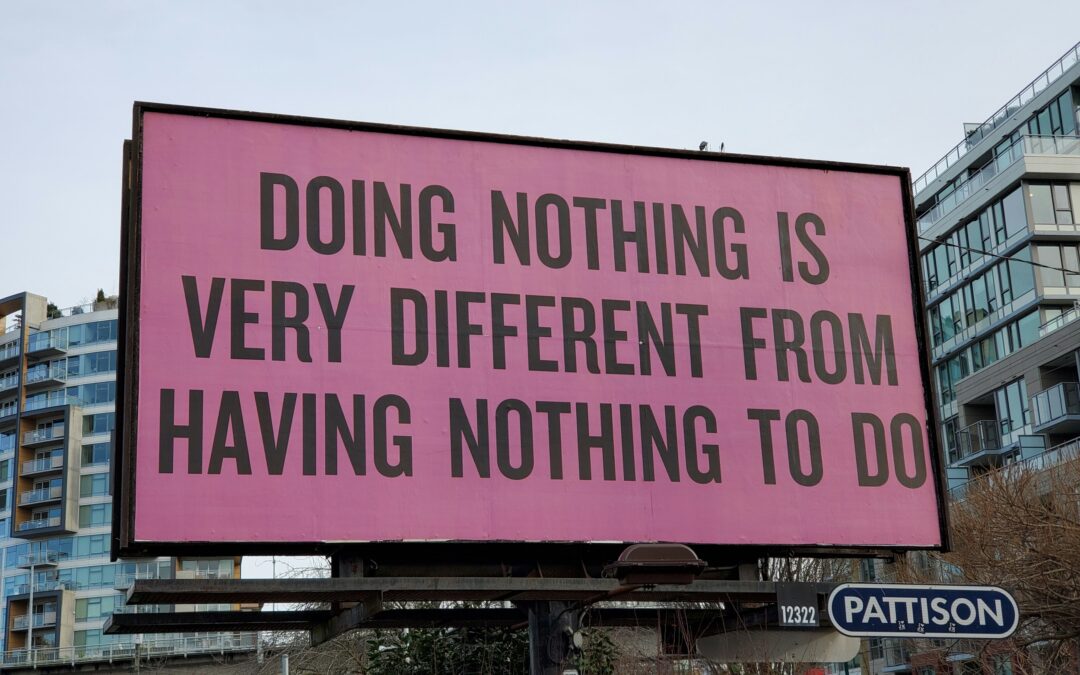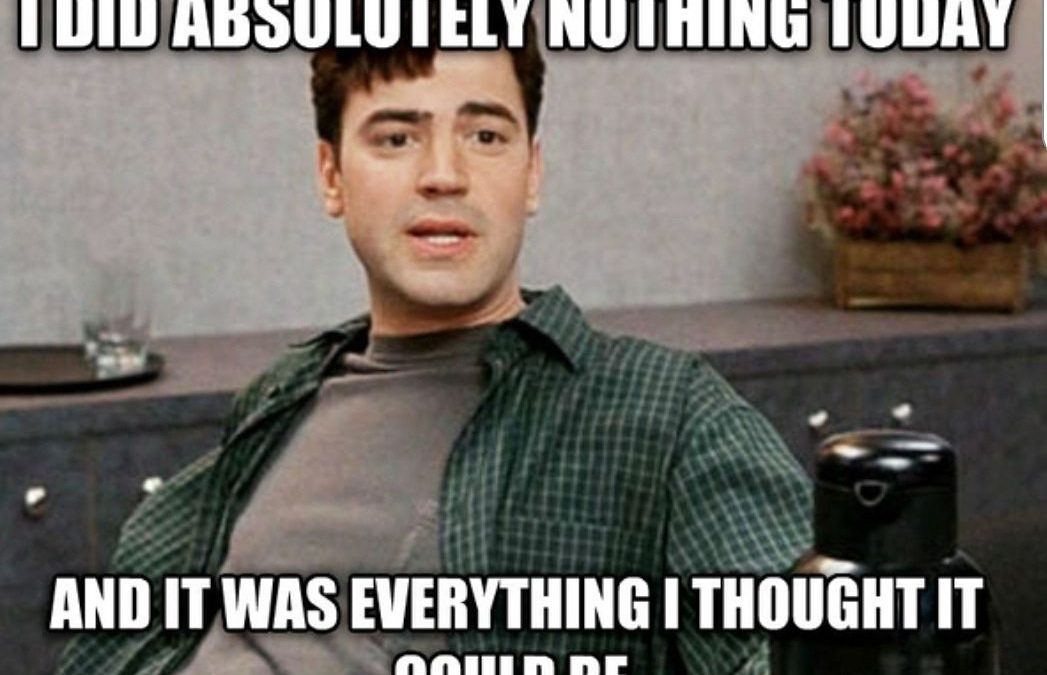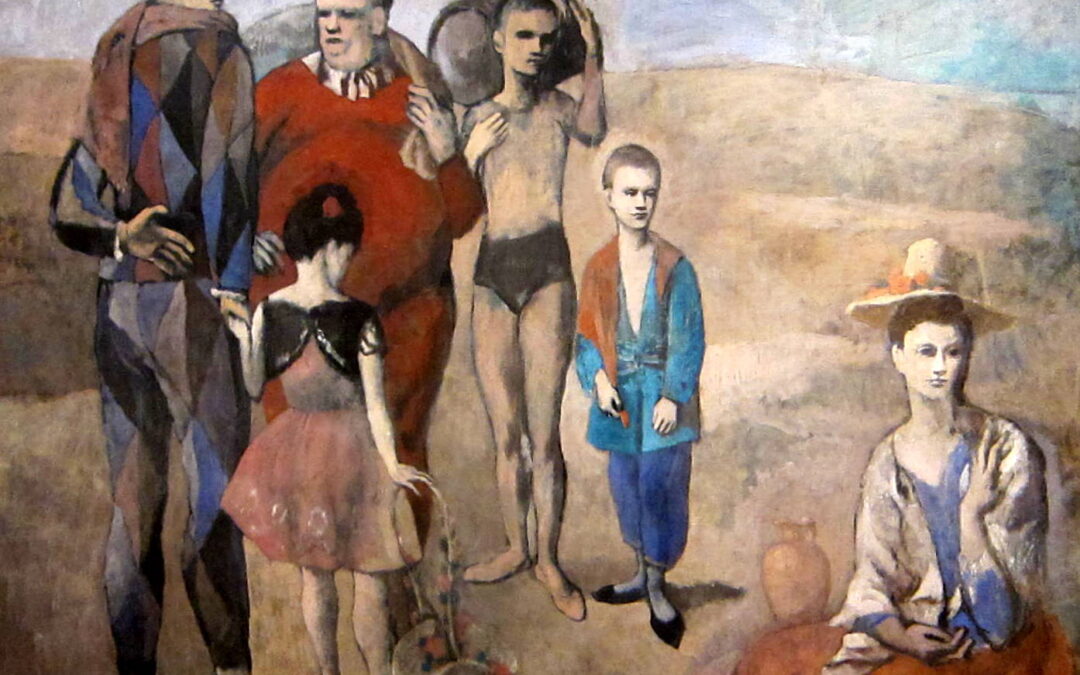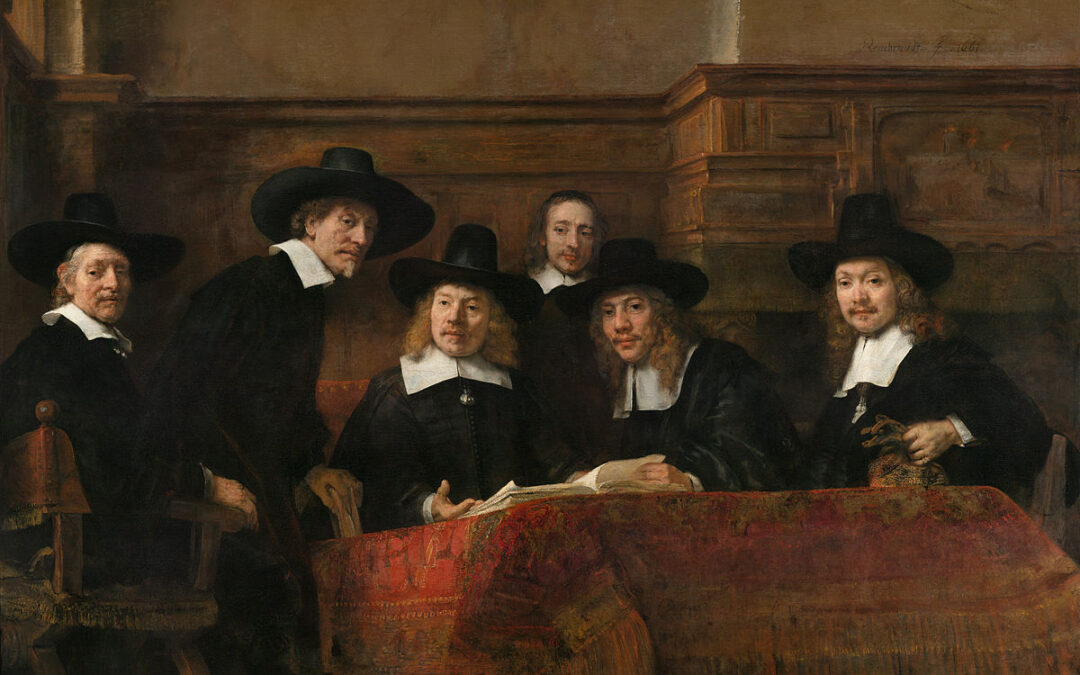
by Robyn Bolton | May 21, 2025 | Innovation, Leadership, Tips, Tricks, & Tools
“What will you do on vacation?” a colleague asked.
“Nothing,” I replied.
The uncomfortable silence that followed spoke volumes. In boardrooms and during quarterly reviews, we celebrate constant motion and back-to-back calendars. Yet, study after study shows that the most successful leaders embrace a counterintuitive edge: strategic idleness.
While your competitors exhaust themselves in perpetual busyness, research shows that deliberate mental downtime activates the brain networks responsible for strategic foresight, innovative solutions, and clear decision-making.
The Status Trap of Busy-ness
At one company I worked with, there was only one acceptable answer to “How are you doing?” “Busy.” The answer wasn’t a way to avoid an awkward hallway conversation. It was social currency. If you’re busy, you’re valuable. If you’re fine, you’re expendable.
A 2017 study published in the Journal of Consumer Research confirmed what Columbia, Georgetown, and Harvard researchers discovered: being busy is now a status symbol, signaling “competence, ambition, and scarcity in the market.”
But here’s the uncomfortable truth: your packed schedule is undermining the very outcomes you’re accountable for delivering.
Your Brain’s Innovation Engine
Neuroscience has confirmed what innovators have long practiced: Strategic Idleness. While you consciously “do nothing,” your default mode network (DMN) engages, making unexpected connections across stored information and experiences.
Recent research published in the journal Brain demonstrates that the DMN is activated during creative thinking, with a specific pattern of neural activity occurring during the search for novel ideas. This network is essential for both spontaneous thought and divergent thinking, core elements of innovation.
So if you’ve always wondered why you get your best ideas in the shower, it’s because your DMN is powered all the way up.
Three Ways to Power-Up Your Engine
Here are three executive-grade approaches to strategic idleness without more showers or productivity sacrifices:
- Pause for 10 Minutes Before Making a Decision
Before making high-stakes decisions, implement a mandatory 10-minute idleness period. No email, no conversation—just sitting. Research on cognitive recovery suggests that this brief reset activates your DMN, allowing for a more comprehensive consideration of variables and strategic implications.
- Take a Walking Meeting with Yourself
Block 20 minutes in your calendar each week for a solo walking meeting (and then take the walk!). No other attendees, no agenda, just walking. Researchers at Stanford University found that walking increases creative output by an average of 60% compared to sitting. The combination of physical movement and mental space creates ideal conditions for your brain to generate solutions to problems you didn’t know you had.
- Schedule 3-5 minutes of Strategic Silence before key discussions
Research on group dynamics shows that silent reflection before discussion can reduce groupthink and increase the quality of ideas by helping team members process information more deeply. Before you dive into a critical topic at your next leadership meeting, schedule 3-5 minutes of silence. Explain that this silence is for individual reflection and planning for the upcoming discussion, not for checking email or taking bathroom breaks. Acknowledge that it will feel awkward, but that it’s critical for the upcoming discussion and decision.
Remember, You’re Not Doing Nothing If You’re being Strategically Idle
The most valuable asset in your organization isn’t technology, capital, or even the products you sell. It’s the quality of thinking that goes into critical decisions. Strategic idleness isn’t inaction; it’s the deliberate cultivation of conditions that foster innovation, clear judgment, and strategic foresight.
While your competitors remain trapped in perpetual busyness, by using executive advantage of strategic idleness, your next breakthrough will present itself.
This is an updated version of the June 9, 2019, post, “Do More Nothing.”

by Robyn Bolton | Aug 28, 2024 | Innovation, Leadership, Tips, Tricks, & Tools
You were born creative. As an infant, you had to figure many things out—how to get fed or changed, get help or attention, and make a onesie covered in spit-up still look adorable. As you grew older, your creativity grew, too. You drew pictures, wrote stories, played dress-up, and acted out imaginary stories.
Then you went to school, and it was time to be serious. Suddenly, creativity had a time and place. It became an elective or a hobby. Something you did just enough of to be “well-rounded” but not so much that you would be judged irresponsible or impractical.
When you entered the “real world,” your job determined whether you were creative. Advertising, design, marketing, innovation? Creative. Business, medicine, law, engineering? Not creative.
As if Job-title-a-determinant-of-creativity wasn’t silly enough, in 2022, a paper was published in the Journal of Applied Psychology that declared that, based on a meta-analysis of 259 studies (n=79,915), there is a “male advantage in creative performance.”
Somewhere, Don Draper, Pablo Picasso, and Norman Mailer high-fived.
But, as every good researcher (and innovator) knows, the headline is rarely the truth. The truth is that it’s contextual and complicated, and everything from how the original studies collected data to how “creativity” was defined matters.
But that’s not what got reported. It’s also not what people remember when they reference this study (and I have heard more than a few people invoke these findings in the three years since publication).
That is why I was happy to see Fortune report on a new study just published in the Journal of Applied Psychology. The study cites findings from a meta-analysis of 753 studies (n=265,762 individuals) that show men and women are equally creative. When “usefulness (of an idea) is explicitly incorporated in creativity assessment,” women’s creativity is “stronger.”
Somewhere, Mary Wells Lawrence, Frida Kahlo, and Virginia Woolf high-fived.
Of course, this finding is also contextual.
What makes someone “creative?”
Both studies defined creativity as “the generation of novel and useful ideas.”
However, while the first study focused on how context drives creativity, the second study looked deeper, focusing on two essential elements of creativity: risk-taking and empathy. The authors argued that risk-taking is critical to generating novel ideas, while empathy is essential to developing useful ideas.
Does gender influence creativity?
It can. But even when it does, it doesn’t make one gender more or less creative than the other.
Given “contextual moderators” like country-level culture, industry gender composition, and role status, men tend to follow an “agentic pathway” (creativity via risk-taking), so they are more likely to generate novel ideas.
However, given the same contextual moderators, women follow a “communal pathway” (creativity via empathy), so they are more likely to generate useful ideas.
How you can use this to maximize creativity
Innovation and creativity go hand in hand. Both focus on creating something new (novel) and valuable (useful). So, to maximize innovation within your team or organization, maximize creativity by:
- Explicitly incorporate novelty and usefulness in assessment criteria. If you focus only on usefulness, you’ll end up with extremely safe and incremental improvements. If you focus only on novelty, you’ll end up with impractical and useless ideas.
- Recruit for risk-taking and empathy. While the manifestation of these two skills tends to fall along gender lines, don’t be sexist and assume that’s always the case. When seeking people to join your team or your brainstorming session, find people who have demonstrated strong risk-taking or empathy-focused behaviors and invite them in.
- Always consider the context. Just as “contextual moderators” impact people’s creative pathways, so too does the environment you create. If you want people to take risks, be vulnerable, and exhibit empathy, you must establish a psychologically safe environment first. And that starts with making sure there aren’t any “tokens” (one of a “type”) in the group.
Which brings us back to the beginning.
You ARE creative.
How will you be creative today?

by Robyn Bolton | Jun 9, 2019 | Innovation
“What do you plan to do on vacation?” my friend asked.
“Nothing…”
Long silence
“…And it will be amazing.”
We live in a world that confuses activity with achievement so I should not have been surprised that the idea of deliberately doing nothing stunned my friend into silence.
After all, when people say, “I wish I had nothing to do” they usually mean “I wish I could choose what I do with my time.” And, when they do have the opportunity to choose, very few choose to do nothing.
Why does the idea of doing nothing make us so uncomfortable?
To put it bluntly, busy-ness is a status symbol.
In their paper, “Conspicuous Consumption of Time: When Busyness and Lack of Leisure Time Become a Status Symbol,” professors Silvia Bellezza (Columbia Business School), Neeru Paharia (Georgetown University), and Anat Keinan (Harvard University), wrote that people’s desire to be perceived as time-starved is
“driven by the perceptions that a busy person possesses desired human capital characteristics (competence, ambition) and is scarce and in demand on the job market.”
We didn’t always believe this.
For most of human history, we’ve had a pretty balanced view of the need for both work and leisure. Aristotle argued that virtue was obtainable through contemplation, not through endless activity. Most major religions call for a day of rest and reflection. Even 19th-century moral debates, as recorded by historian EO Thompson, recognized the value of hard work AND the importance of rest.
So what happened?
While it’s easy to say that we have to work more because of the demands of our jobs, the data says otherwise. In fact, according to a working paper by Jonathan Gershuny, a time-expert based on the UK, actual time spent at work has not increased since the 1960s.
The actual reason may be that we want to work more. According to economist Robert Frank, those who identify as workaholics believe that:
“building wealth…is a creative process, and the closest thing they have to fun.”
We choose to spend time working because Work — “the job itself, the psychic benefits of accumulating money, the pursuit of status, and the ability to afford the many expensive enrichments of an upper-class lifestyle” according to an article in The Atlantic — is what we find most fulfilling.
It’s not that I like working, I just don’t like wasting time.
We tend to equate doing nothing with laziness, apathy, a poor work ethic, and a host of other personality flaws and social ills. But what if that’s not true.
What if, in the process of doing nothing, we are as productive as when we do something?
Science is increasingly showing this to be the case.
Multiple fMRI studies have revealed the existence of the default mode network (DMN), a large-scale brain network that is most active when we’re day-dreaming. Researchers at the University of Southern California argue that
“downtime is, in fact, essential to mental processes that affirm our identities, develop our understanding of human behavior and instill an internal code of ethics — processes that depend on the DMN.”
The results of harnessing the power of your DMN are immense:
More creativity. The research discussed in Scientific American suggests that DMN is more active in creative people. For example, according to Psychology Today:
- The most recorded song of all time, “Yesterday” by The Beatles, was ‘heard’ by Paul McCartney as he was waking up one morning. The melody was fully formed in his mind, and he went straight to the piano in his bedroom to find the chords to go with it, and later found words to fit the melody.
- Mozart described how his musical ideas ‘flow best and most abundantly.’ when he was alone ‘traveling in a carriage or walking after a good meal, or during the night when I cannot sleep… Whence and how they come, I know not, nor can I force them.’
- Tchaikovsky described how the idea for a composition usually came ‘suddenly and unexpectedly… It takes root with extraordinary force and rapidity, shoots up through the earth, puts forth branches and leaves, and finally blossoms.’
More productivity. According to an essay in The New York Times, “Idleness is not just a vacation, an indulgence or a vice; it is as indispensable to the brain as vitamin D is to the body, and deprived of it we suffer a mental affliction as disfiguring as rickets. The space and quiet that idleness provides is a necessary condition for standing back from life and seeing it whole, for making unexpected connections and waiting for the wild summer lightning strikes of inspiration — it is, paradoxically, necessary to getting any work done.”
Less burnout. Regardless of how many hours you work, consider this: researchers have found that it takes 25 minutes to recover from a phone call or an e-mail. On average, we are interrupted every 11 minutes which means that we can never catch up, we’re always behind.
That feeling of always being behind leads to burn-out which the World Health Organization officially recognized as a medical condition defined as a “syndrome conceptualized as resulting from chronic workplace stress that has not been successfully managed” and manifests with the following symptoms:
- Feelings of energy depletion or exhaustion
- Increased mental distance from one’s job, or feelings of negativism or cynicism related to one’s job
- Reduced professional efficacy
Doing nothing, quieting our minds and not focusing on any particular task, can actually help reset our bodies systems, quieting the release of stress chemicals, slowing our heart rates, and improving our mental and physical energy
Better health. Multiple studies indicate that idleness “produces many health benefits including, but not limited to, reduced heart rate, better digestion, improvements in mood, and a boost in overall emotional well-being — which, of course, affects everything on a biochemical and physiological level, thereby serving as a major deciding factor on whether or not we fall ill, and/or remain ill. Mental downtime also replenishes glucose and oxygen levels in the brain, and allows our brains to process and file things, which leaves us feeling more rested and clear-headed, promotes a stronger sense of self-confidence, and…more willing to we trust change.”
Fine, you convinced me. How can I do nothing?
There are the usual suspects — vacations, meditation, and physical exercise — but, if you’re anything like me, the thought of even finding 5 minutes to listen to a meditation app is so overwhelming that I never even start.
An easier place to start, in my experience, is in intentionally working nothing into the moments that are already “free.” Here are three of my favorite ways to work a bit of nothing into my day.
Make the Snooze button work for you. When my alarm goes off, I instinctively hit the Snooze button because, I claim, it is my first and possibly only victory of the day. It’s also a great way to get 9 minutes of thoughtful quiet nothingness in which I can take a few deep breaths, scan my body for any aches and pains, and make sure that I’m calm and my mind is quiet when I get out of bed.
Stare out the window. I always place my computer next to a window so that I can stare out the window for a few minutes throughout the day and people think I’m thinking deep thoughts. Which I am. Subconsciously. Lest anyone accuse me of being lazy or unproductive while I watch the clouds roll by, I simply point them to research that shows “that individuals who took five to ten minute breaks from work to do nothing a few times a day displayed an approximately 50% increase in their ability to think clearly and creatively, thus rendering their work far more productive.
Bring the beach to you. Research from a variety of places, from the UK Census to The Journal of Coastal Zone Management, indicate that our brains and bodies benefit from time at the beach. But, if you can’t go to the beach, there are lots of ways to bring the beach to you. Perhaps the simplest is to bring more blue into your environment. Most people associate blue with feelings of calm and peace and a study published in the American Association for the Advancement of Science found that the color blue can boost creativity. Even putting a picture of a beach (or your own personal happy place) on your desk or computer screen can trigger your brain to slow down, relax, and possibly trigger your DMN.
With so many benefits, isn’t it time you started doing more nothing?




